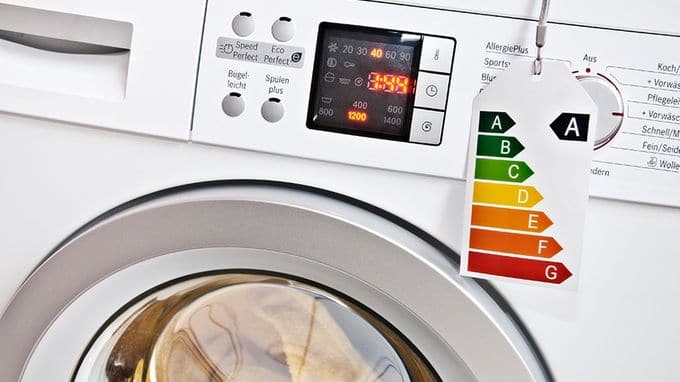Washing machine for more than 200 years is one of the most popular household devices. Of course, high demand stimulates the companies to constantly expand the range and improve its models. But the abundance of sentences sometimes makes it difficult to choose the optimal model when buying a washer. This problem is partially solved with the help of energy efficiency label that contains a lot of useful information about the device. All modern models necessarily have such labels.
Given the energy cost, the choice of household appliances with a small consumption of electricity and water can significantly save the budget.
Unfortunately, a label has no unified form and can differ in America, Europe or Asia. But all labels have the same content.
Decryption
Scale contains the first 7 letters of the alphabet from A to G.
A – five;
B – four-plus;
C – four;
D – four and a minus (average or normal);
E – three;
F – two;
G – one.
Characteristics of the device are identified by a digital classification.
1 – device type; p>
2 – manufacturer;
3 – model;
4 – a class energy consumption;
5 – energy consumption (kW / h);
6 – washing performance;
7 – spin drying performance;
8 – the maximum possible speed of the drum rotation during the spin cycle, rpm;
9 – capacity (cotton) (kg); p>
10 – water consumption for washing cycle (L);
11 – noise level (washing) (dB);
12 – noise level (spin drying) (dB).
Energy class of washing machines
Common standards envisage seven classes of devices that are denoted by Latin letters from A to G. The letter A corresponds to the upper class, and G denotes the lowest class. These standards are determined by the electricity consumption per hour at washing one kilogram of cotton laundry. In 2013, have appeared more cost-effective devices and several new sub-classes for them. They are designated A +, A ++ and A +++. But sometimes companies label these subclasses as A, AA or AAA, respectively.
Each letter corresponds to the certain energy consumption level.
Class power consumption / Energy consumption (kWh / kg ):
– A ++ – 0.15;
– A + – 0.17;
– A – 0,17 – 0,19;
– B – 0,19 – 0,23;
– C – 0,23 – 0,27;
– D – 0,27 – 0,31;
– E – 0,31 – 0,35;
– F – 0,35 – 0,39;
– G – 0,39.
Washing performance
This value uses the Latin letters from A to G and is located on the right side of the label. The order of the letters determines the quality and thrift of washing. Accordingly, the devices of class A have the maximum value.
Spin drying performance
This value also uses the Latin letters. Class A corresponds to a high speed of the drum rotation. Accordingly, their spin drying quality is better compared to devices of other classes. However, some fabrics, such as silk, require a delicate spin cycle that is characterized by a minimum speed of the drum rotation. Each class corresponds to a certain moisture level of the laundry.
Class / residual moisture,%:
– A – less than 45;
– B – 45 – 54;
– C – 54 – 63;
– D – 63 – 72;
– E – 72 – 81;
– F – 81 – 90;
– G – more than 90.
Today, innovative technologies are the basis for reducing energy consumption. For example, modern Bosch washers use ActiveWater, DinamicAir, etc technologies. This video presents a Panasonic Sustainable Maintainer washer that folds your clothes.
